Respect Grows When We Value Kids’ Ideas
A MiddleWeb Blog
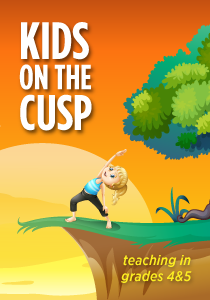 When I first started teaching, back in 1998, I was taught to develop a set of class rules as a means of setting the tone for the year.
When I first started teaching, back in 1998, I was taught to develop a set of class rules as a means of setting the tone for the year.
I understood the reasoning. It was important to identify and define rules and procedures in order to effectively work as a group.
Years later, in retrospect, I came to realize that the kids already “know the rules.” They are also quite good at following fire drill procedures with little prompting from me.
By fourth grade, when the fire alarm goes off, the kids know to stop what they are doing, line up quietly, and exit the building via the predetermined route laid out for them – and to do this with little or no talking.
Traditional rule-making
For many years, the same could be said about class rules. Each year, we would gather on the rug and identify the important rules for our year in a class discussion. Our ideas would be listed on a chart in neat, bulleted form, and this chart would be posted on the wall…and for the most part forgotten.
These rules were “defined” by the students, but the content was pre-established by their experiences in earlier grades and at home (and the content was predetermined in my own head, if I’m being honest).
Rules are important in any society, be it in a classroom, a school community, or in government. For them to make a difference, they need to have true meaning and merit to the individuals we expect to follow them.
Over time, I came to believe that educators need to take a closer look at how these rules are identified and defined.
Rethinking rules, with respect
Several years ago, I walked into a colleague’s classroom and saw her list of “class rules.” There was only one. It was Respect…one, simple word.
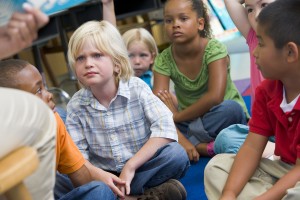
Since then, we have had one rule in our classroom. It is simple and open to interpretation. This is a helpful tool in the classroom management department.
Examples of respectful (or disrespectful) behaviors occur in our classrooms, and in our lives, each day. Kids want to be part of something good, valuable and important. Kids want to be respected. So do teachers. But, respect goes much deeper than a definition written on a large piece of chart paper and displayed on a wall.
To truly own an idea, it must be examined closely. Big ideas must be explored, and examples of a concept’s application in the real world need to be identified for true learning to happen. A pre-assessment of student knowledge is essential.
How we get to work on Respect
A simple QuickWrite has proven to be a useful tool, not only in gathering data about how my kids define the word respect, but as a low-stress activity to begin the year, assess student writing ability, and start the conversation about how we will work as a group throughout the year.
My hope for the next activity is to pull the wisdom from each child’s response and create a class compilation that shows what respect means to us. I want them to know that their voices matter.
After the QuickWrite has been completed, the kids will reread their individual responses and highlight one or two of the sentences or phrases they think are the most compelling. Then we will partner up to read our entire response to a friend, identify our favorite part, and give our partner a chance to highlight and explain what part of our response they found most captivating. (This will also help us explore the art of discussion, an important tool in developing expressive language!)
Then a final selection will be made by each writer, and every “individual wisdom” will be written neatly on a sentence strip and added to the Wall of Wisdom. The only thing hanging there right now is a sign that reads, “Class Rules…There is Only One.”
Finally, after finding out what respect means to the new kids in 4-T, we will celebrate our hard work with a little dancing and explore what it means to the beautiful and talented Aretha Franklin. There’s nothing like making some cross-curricular connections to keep us learning!
Valuing kids’ ideas
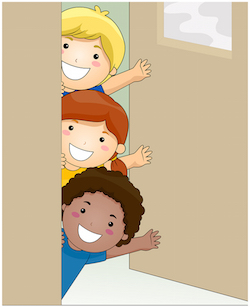
My close friend Merriam Webster defines respect as “a feeling of admiring someone or something that is good, valuable, or important and should be treated in an appropriate way.”
I’m looking forward to meeting my new class in the coming week and finding out how they define respect. Kids do say the darndest things. We can learn a lot from their big ideas…ideas which are often stated so simply.

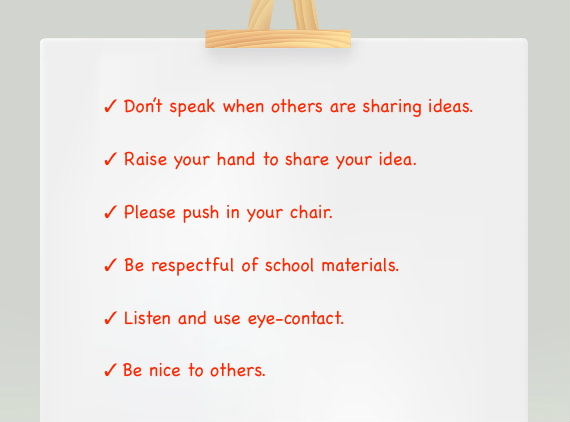
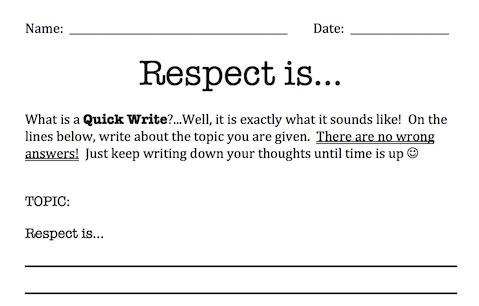


































What a great idea (as always) Mary T! I just love learning from your wisdom! You have amazing ideas! Thanks, dude!
Hope your first week was Paradise!..hehehe…thanks for always being such a support :)
Love it, Mary!
Let’s start an Aretha flash mob at the next grade level meeting!…I know you would join in!
A great idea for a quickwrite.
Our PBIS Character for September is “Respect”. Enjoy the video
Thank you, Neil…I am going to share this with my crew this week!
I really enjoyed and agree with your article, however I can not share it with my friends because I respect children too much to call them “kids”. Kids are baby goats. Children are children. I know somehow the slang term has become a normal choice, however I feel it is disrespectful. Please join me on my quest to correct the slang use of the term kid when we are writing and talking about children. Thank you.
I’m glad you liked the idea…I’m sorry you find the word kid offensive…I don’t really understand, but I do respect your right to feel that way…best of luck to you